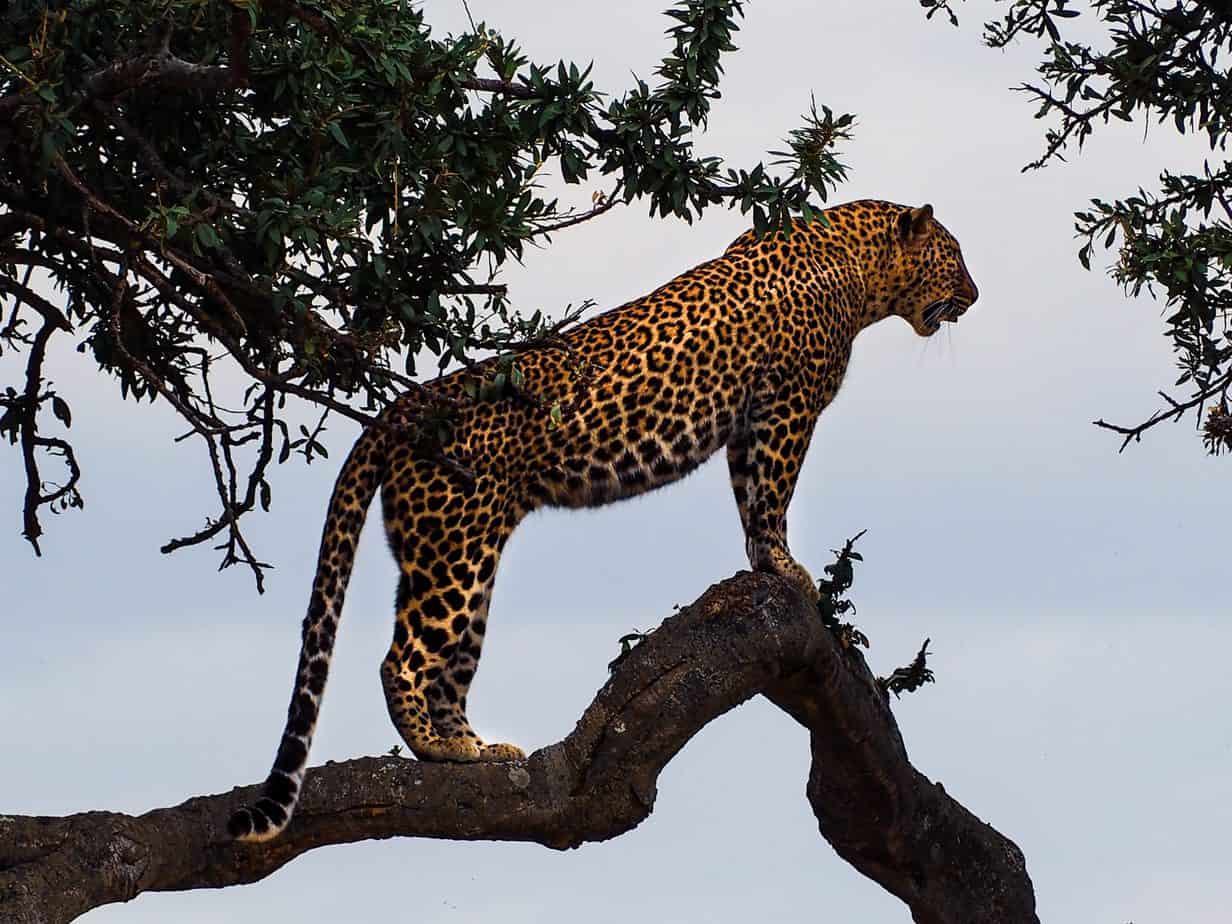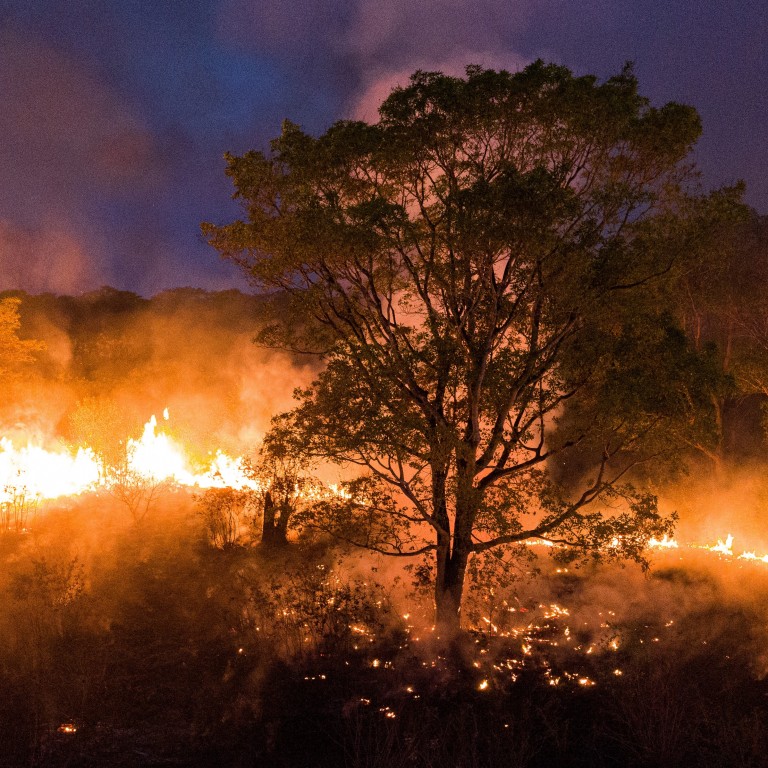RIO DE JANEIRO, BRAZIL – Last Friday afternoon, September 11th, a Brazilian Navy helicopter took off with an unusual passenger: a jaguar. During the air transport, the scared eyes of the animal, rescued in the Pantanal, in no way resembled the fearless feline that used to approach the boats, a feature that made it known in the region as ‘Ousado’ (Bold).
Hours before boarding the helicopter, the animal had been located by a team of volunteers assisting in the rescue of animals in the Pantanal, which is experiencing its worst period of patch burning in recent decades.

‘Bold’ was prostrate in the Encontro das Águas State Park, in the region of Porto Jofre, in the city of Poconé (MT), when it was found by the volunteers passing through the region by boat. The feline had its paws burned. It was aggressive and needed to be anesthetized in order to be removed from the site.
Located in the Pantanal, the Encontro das Águas State Park is the area with the largest concentration of jaguars in the world. However, over the past few weeks, the site has become extremely dangerous for cats. Of the 108,000 hectares of reserve, 77,000 have been affected by fires so far, according to data from the Mato Grosso Fire Department.
As in the park, fire has rapidly spread throughout the Pantanal, which has already had more than 2.3 million hectares affected by patch burns, according to the National Center for the Prevention and Fight against Forest Fires (PREVFOGO). The figure represents over 15 percent of the whole extension of the biome in Brazil, according to the SOS Pantanal Institute. The burned area corresponds to almost three times the metropolitan region of São Paulo, which shelters 39 municipalities, or 15 times the area of the São Paulo capital alone.
From January to early September, 12,100 hot spots were recorded in the Pantanal, according to the National Space Research Institute (INPE). It is the largest figure for the period since 1999, when the institute began a monitoring effort that became a reference for tracking fires in Brazil.
Like the flora, the Pantanal’s fauna has been severely affected. There are several charred animals in the biome. The jaguars that inhabit the area try to escape from the fire, but some end up being wounded by the flames.
The largest feline in the Americas

Studies point out that Brazil holds about 50 percent of the world’s jaguars – over 90 percent of them are found in South America. In Brazil, the largest feline of the Americas is found in different biomes, such as the Amazon (where there is more of this species), Pantanal, Cerrado, Caatinga and Atlantic Forest.
Jaguars are regarded as nearly endangered by the International Union for Conservation of Nature (IUCN). The Ministry of the Environment classifies the species as vulnerable (when studies point that there is risk that it could become endangered).
According to scholars, jaguars are important to the different biomes. “They are fully carnivorous. Therefore, they can control the amount of prey in the environment. For instance, they can eat capybaras, deer and peccaries. As jaguars are at the top of the food chain, they don’t allow any lower level animal to have a reproduction explosion,” explains biologist Lilian Elaine Rampim, coordinator of the Onçafari association, which acts in the preservation of jaguars and maned wolves.
Jaguars suffer threats such as the expansion of urban territory, which takes over areas in which they lived, such as the Atlantic Forest. Another challenge faced by the species is the fact that they are common targets of rural landowners, who believe they represent serious threats. According to experts, there is a lack of public support for the preservation of the largest feline in the Americas.
Currently, the greatest threats to jaguars are the fires in the Amazon and Pantanal, the main refuges of the species.
“These patch burns are caused by man and there is no control, so they become fires. This is very damaging to jaguars,” explains biologist Ricardo Boulhosa, president of the Pró-Carnívoros Institute, which works to preserve carnivorous mammals.
A Panthera researcher, Fernando Tortato highlights the value of the Encontro das Águas State Park. “There has always been a protected corridor that has ensured a quality habitat for jaguars. In the park, many jaguars can be observed, so it favors tourism,” he says.
Ecotourism in the Brazilian Pantanal, in the states of Mato Grosso do Sul and Mato Grosso – the biome also has areas in Bolivia and Paraguay – finds in the largest feline in the Americas one of its main attractions.
Studies by the Panthera organization, dedicated to the conservation of these felines, pointed out that jaguar observation tourism in the Brazilian Pantanal represents an annual gross revenue of US$6.8 million to the region’s communities. According to these studies, the Encontro das Águas State Park welcomed over 2,800 foreign visitors in 2015.
The fires
The Encontro das Águas Park area had already caught fire in past years. “But never in the current proportions,” comments Tortato.
He explains that, in previous years, jaguars managed to escape to other locations, such as nearby farms. However, it is currently difficult for the animals to find a safe place in the Pantanal, where they are not at risk of being caught by the fire.
The researcher states that the impact of the fires on jaguars is not yet known. When explaining the consequences for the Pantanal fauna, he says that there are direct effects, when the animal is struck by fire, and indirect effects, when there is lack of water or food.
“Many species will be affected. The alligators and capybaras, which serve as food for the jaguars, may not feel much consequence of the fires because they are aquatic species. So jaguars may have food. But the herbivorous animals, for instance, will have to travel for miles in the Pantanal until they find something to eat,” explains Fernando.
In recent days, several teams of volunteers have been traveling to the Pantanal to leave food for the animals, such as fruits and vegetables, because the local vegetation has been severely impacted by the fire.
The number of animals that have been or may be affected by the fire spreading through the Pantanal is not yet known.
In recent weeks, two jaguars have been rescued by volunteers. There are reports of others that have also been affected by the fires. According to experts, one of the main challenges regarding the species is capturing them, due to their strength and agility, even if they have been injured.
The first jaguar was rescued in mid-August, after invading residents’ homes in the Pantanal region. It had third degree burns on all its paws. The animal is being treated with stem cells to repair the affected areas.
“The application of stem cells has the power to convert any cell in the body. The first jaguar rescued is doing well and recovering. But it will have serious sequelae for the rest of its life,” explains veterinary doctor Jorge Aparecido Salomão, a member of Ampara Silvestre, an initiative that has helped animals in the Pantanal.
As well as ‘Bold’, it was flown to the Institute for the Preservation and Defense of Wild Fauna Felines of Brazil in the Process of Extinction (NEX), in Corumbá de Goiás (GO).
The experts believe that the first jaguar rescued should not be returned to nature, due to the consequences of the burns. It is expected to live in captivity, under the help of veterinarians.
‘Bold’ had its paws injured and struggles to walk and stand up. It should also start stem cell therapy ” It is fine, at first. The problem is that burn injuries can take time to develop,” explains Solomon. At least for now, experts believe that the animal should be returned to nature. “We hope that it will recover and will be able to return to the Pantanal”, says the veterinarian.
Source: BBC

